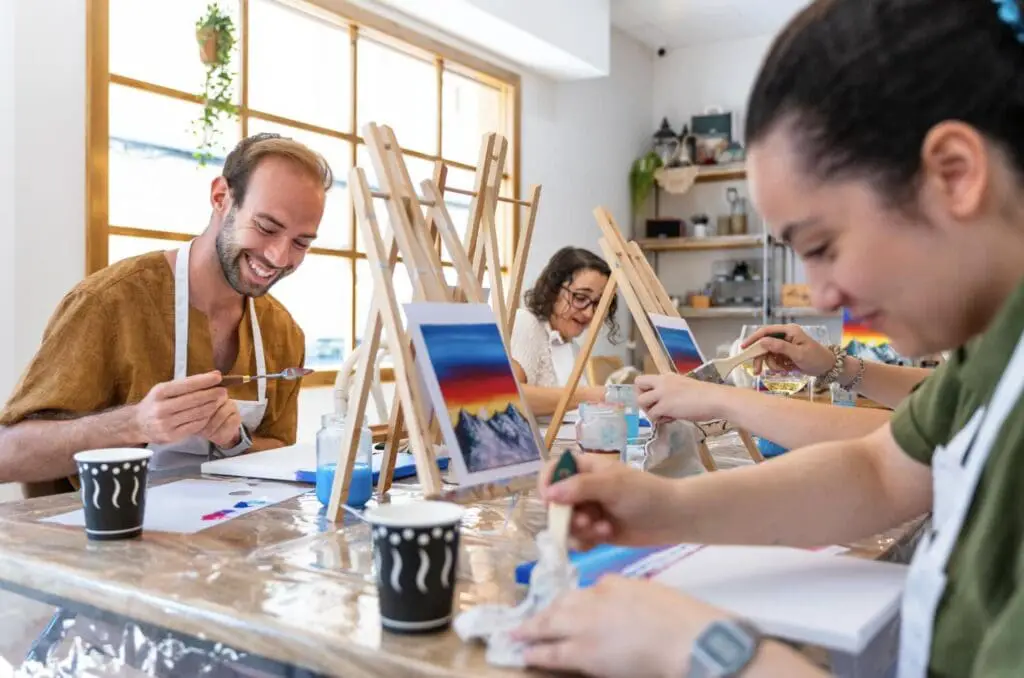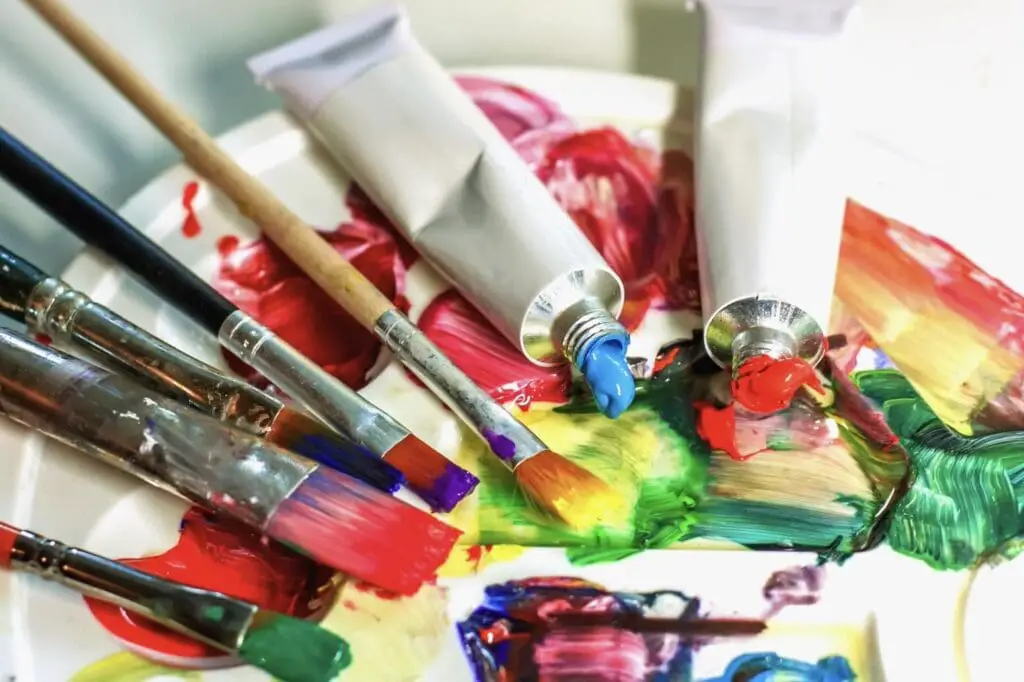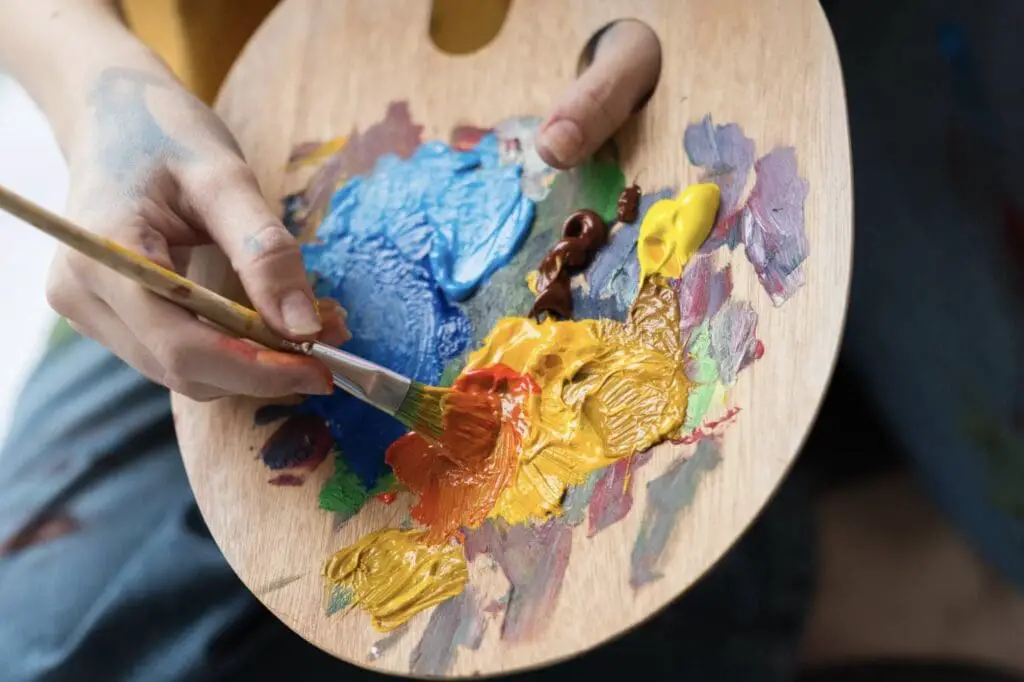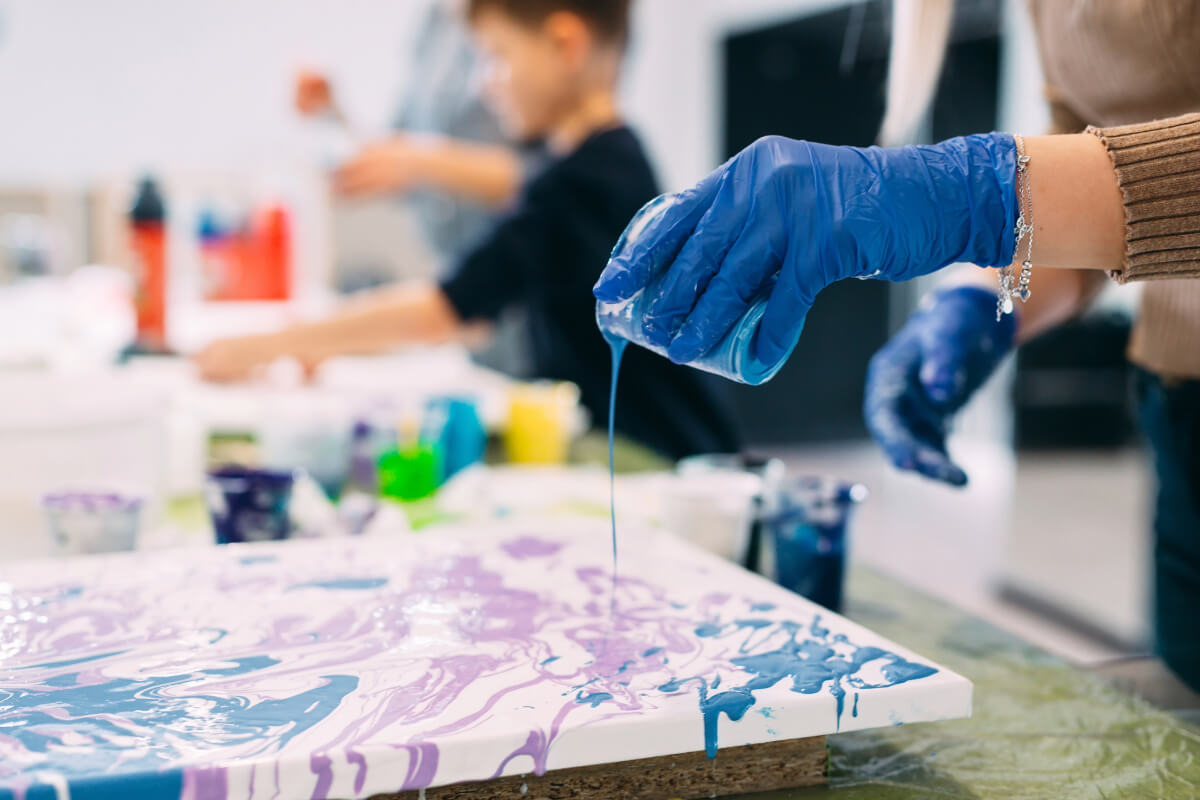Unraveling the intricacies of how long it takes acrylic paint to dry is a fascinating journey. It requires a nuanced grasp of the composition of acrylic paint, which entails a mixture of pigments and acrylic polymer emulsion. Their interplay and the use of mediums and additives significantly influence the drying time.
Furthermore, one must also consider environmental factors – such as humidity, temperatures, and paint application methods – as they substantially influence drying times. This essay will explore these topics in-depth, providing a comprehensive guide for understanding and manipulating the drying process.
Table of Contents
- Understanding Acrylic Paint Composition
- Factors Influencing Drying Time
- Effective Ways to Manipulate Drying Time
- Related Content
Understanding Acrylic Paint Composition
Acrylic Paint Components and Their Influence on Drying Time
Acrylic paint is a favorite medium among beginners and professional artists alike. Known for its versatility, brilliant color vibrancy, and brisk drying time, making it quite the favorite for spontaneous work, acrylic paint doesn’t stop at merely splashing colors onto a canvas.
Why? Because there’s a science behind its drying properties. This article will unravel the components of acrylic paint and explain how they influence the drying time.
The main components of all acrylic paints are pigment, binder, and solvent. Their size, concentration, and interaction determine saturation, viscosity, opacity, and drying time.
First off is the pigment. A treasure trove of colorful particles and pigments grants the paint its vibrancy and color. Despite their color-contributing role, pigments don’t have a straight tie-in with drying time.
However, they affect the viscosity of the paint. High-pigment paints are usually thicker, which could marginally increase the time it takes to dry.
Secondly, the binder is what holds the pigment together. In acrylic paints, the binder is an acrylic polymer emulsion. When exposed to air, this binder transitions from liquid to solid, aiding the paint to adhere to surfaces.
The drying time largely depends on the speed of this transition. Temperature and humidity also influence this binding process, with a warmer and drier environment speeding up the drying time.
Last comes the solvent, which is the water in acrylic paints. Water dissolves the binder and pigment to create a fluid or gel-like consistency that can be applied easily. Once you apply the paint to the canvas, the water starts evaporating, allowing the remaining components of the paint to dry. Thus, the quantity of water incorporated can impact the drying time.
It is critical to note that while the components play vital roles, the thinness or thickness of the layer you’re applying also significantly affects the drying time. Thinner layers of acrylic paint typically dry within minutes, while thicker layers may take an hour or longer.
Also noteworthy is the use of drying retarders or ‘slow-dry’ mediums, which can control the drying time. These substances work by slowing down the evaporation of the water and the hardening of the polymer, providing artists more time for blending colors and creating details.
While some may argue about its fast-drying nature, every hobbyist would unanimously agree that understanding the composition of acrylic paint can help unlock its full potential. Whether it is adjusting the drying time or biasing color vibrancy, the true joy of acrylics lies in knowing and leveraging its characteristics.
So, the next time you use acrylic paint, remember these insights about its components and their role in drying time. Happy painting!

Factors Influencing Drying Time
Understanding how environmental and application factors impact the drying time of acrylic paint is a bit like diving into the rabbit hole of Wonderland – it’s exciting, dynamic, and, sometimes, full of surprising twists.
Drawing on your significant knowledge, let’s explore additional variables that intimately influence your acrylic paint’s drying behavior.
Starting on a microscopic level, believe it or not, the geographical location where your paint was produced can wield an impact on its drying time. Mineral composition varies worldwide, and these unique compositions can slightly alter how long your paint needs to dry. Peculiar, right?
Poor ventilation is another villain of the acrylic drying process. It slows down the evaporation of the water in the paint, lengthening the drying time. Artists ensure that your studios are well-ventilated for optimum drying conditions.
If you’re painting outdoors, be mindful of gusty weather. Wind can speed up the drying process, sometimes too quickly, causing the paint to crack.
Continuing the environmental tour, sunlight is versatile in acrylic paint drying. It can expedite the drying process, and the UV rays facilitate the polymerization process – where the binder transforms from a liquid to a solid state. Fascinating, to say the least!
Translating this knowledge to your palette, if you want your acrylic paint to dry faster, opt for a palette designed to retain moisture for a more extended period. Certain palette materials like plastic or glass can offer just that, as they minimize the evaporation rate of water.
Here’s another fun fact – the type of surface you’re painting on plays a significant role. Non-porous surfaces like plastic or metal lengthen the drying time because they provide no absorption, while porous surfaces like canvas or wood will speed up the drying process.
Lastly, focusing on application factors, using mediums alongside acrylic paint can factor in significantly. Different mediums, like gels or pastes, can alter the texture and clarity of the paint, which inherently affects the drying time. Furthermore, consider the brush strokes in your artwork.
Broad, sweeping strokes will lay down a thinner layer of paint, reducing drying time, while dabbing or stippling techniques may lead to thick globs of paint that will take longer to dry.
There you have it – you’re not just an artist but now a curious scientist exploring the intricate dynamics of acrylic drying. Next time you step in front of your easel, remember these intriguing influences, and may you wield this understanding to better control and predict the drying time of your acrylics. Enjoy creating your masterpiece with confidence and flair.

Effective Ways to Manipulate Drying Time
The Art of Controlling Acrylic Paint’s Drying Time
More than the composition and application, it’s interesting to note that your geographical location and the mineral composition of the area can impact your acrylic paint’s drying time.
It’s no longer just pigment, binder, and water – we’re talking about the humidity, temperature, dissolvable minerals, and even the atmospheric pressure in your area playing in, adding another layer of consideration to your painting process.
If you want to speed up the drying time, try painting in a location with rich airflow. Poor ventilation can hinder the drying process because the water in the paint doesn’t evaporate as quickly.
On the flip side, you might consider setting up your easel in a more enclosed space if you’re trying to slow the drying process for a more extended open-paint experience.
Sunlight and UV rays can be a friend or foe to your drying time manipulation efforts. Sunlight helps the paint dry faster through heat, but remember that prolonged exposure to UV rays can lead to faster pigment degradation. So, if you’re going for the plein air approach, protect your work to ensure it lasts the test of time.
One crucial player in the drying game that doesn’t get much attention is the type of palette material you use. For example, glass and porcelain palettes encourage quicker drying as they are non-absorbent. Wood or paper palettes, on the other hand, absorb water, slowing down the drying process while keeping the paint fresh for longer.
The actual surface you’re painting matters, too. Acrylic paint dries faster on non-porous surfaces like metal or plastic, as they don’t absorb any water. However, the material absorbs some water on a porous surface, such as canvas or paper, extending the drying time.
Now, let’s dive deeper into using mediums to control drying time. Acrylic mediums can add or reduce gloss and transparency, create textures, provide a protective finish, and, yes, manipulate drying time. Adding a slow-drying medium to your acrylic paint will slow its drying time while keeping the brightness of the color.
Finally, here’s something a lot of artists miss. Your brush stroke technique can heavily contribute to your control over drying time. A heavy stroke with a thick layer of paint will naturally take longer to dry than a swift, thin application. It’s not just about what’s in your paint—it’s also about what’s in your strokes.
Knowing how to use these factors can give you more control over your acrylic painting’s drying time. There are no rules, only tools, right? Remember, art is as much about the journey as a result. Experiment, find what works best for you, and make something beautiful.

To effectively manipulate the drying time of acrylic paint, an understanding of its composition, combined with insight into the environmental and application factors, is indispensable.
It allows artists to harness techniques, mediums, acrylic retarders, heat tools, and surface choices to control drying.
By mastering these variables, artists have a broader range of expression and nuanced control over their work’s evolution, and they can bring a new depth of masterful creativity to their art. Becoming proficient in the science of drying times enriches the tactile experience of painting and adds another dimension to the journey of artistic discovery.
If you want to manufacture home decor products in Asia, we would love to discuss how Mondoro can help you. We can produce for you a variety of home decor products.
Find out more about how Mondoro can help you create, develop, and manufacture excellent home decor and furniture products – don’t hesitate to contact me, Anita. Check out my email by clicking here or become a part of our community and join our newsletter by clicking here.
Mondoro gives out a FREE Lookbook to anyone interested. You can receive a copy of our latest Lookbook by clicking here.
Listen to our Podcast called Global Trade Gal. You can find it on all major podcast platforms. Try out listening to one of our podcasts by clicking here.
Subscribe to our Mondoro Company Limited YouTube Channel with great videos and information by clicking here.
Related Content
Acrylic Lacquer Paints: Finish For Various Products
Their application spans a broad spectrum, from the sleek bodies of classic cars to the vibrant curves of guitars and onto the cherished surfaces of antique furniture. Acrylic lacquer’s popularity is no coincidence—it’s a testament to its superior qualities and the finish it delivers. Read on as we explore the essence of acrylic lacquer, examining its distinct characteristics and the reasons behind its widespread adoption across diverse finishing practices.
You can discover more by reading Acrylic Lacquer Paints: Finish For Various Products by clicking here.
Latex Paint Vs. Acrylic Paint: 20 Key Differences
Two types stand out as the most recognized when exploring the world of paints: latex and acrylic paint. While these paints might appear similar at first glance, they possess distinct differences. Join us as we delve into the definitions of each paint and highlight their unique characteristics.
By clicking here, you can learn more by reading Latex Paint Vs. Acrylic Paint: 20 Key Differences.
Differences Between Lacquer, Acrylic, and Enamel Paint
Lacquer paint is a quick-drying paint that is very hard and scratch-resistant; it is a traditional paint used for handicraft production in Vietnam and Japan. Acrylic paint is one of the most versatile paints and easiest to work with; acrylic paint can be used with water. Enamel paint is also a paint that dries hard but usually has a shiny topcoat.
You can learn more by reading our blog Differences Between Lacquer, Acrylic, and Enamel Paint by clicking here.


